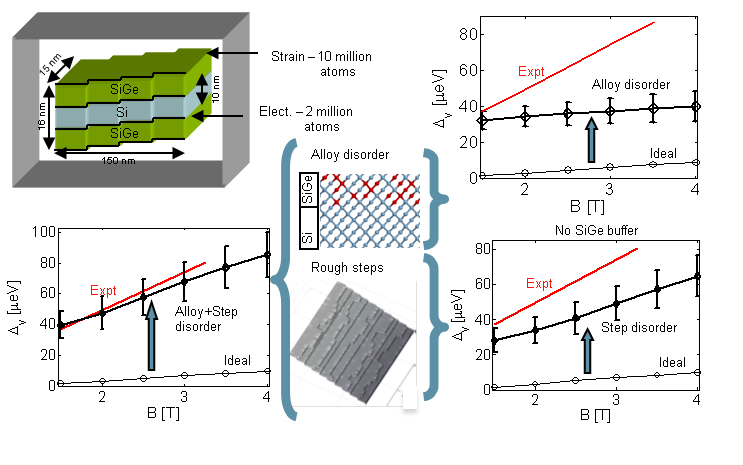Objective:
- Explain experimentally observed suppression in valley-splitting in miscut (100) Si QWs
- Study effect of alloy disorder and step roughness at Si/SiGe interface on the electronic structure
Approach:
- Model miscut Si QWs along with SiGe buffers to include strain and atomistic alloy disorder in SiGe buffer
- Strain relaxation: VFF-Keating
- Magnetic field: Peierl's substitution
- Step roughness: replicate experimentally observed surface morphology on the atomistic grid
Impact
- Alloy disorder in SiGe and step roughness at Si/SiGe interface is crucial to accurately model valley-splitting
- Model predicts experimentally observed valley-splitting without any ad-hoc fitting parameters

|
|



